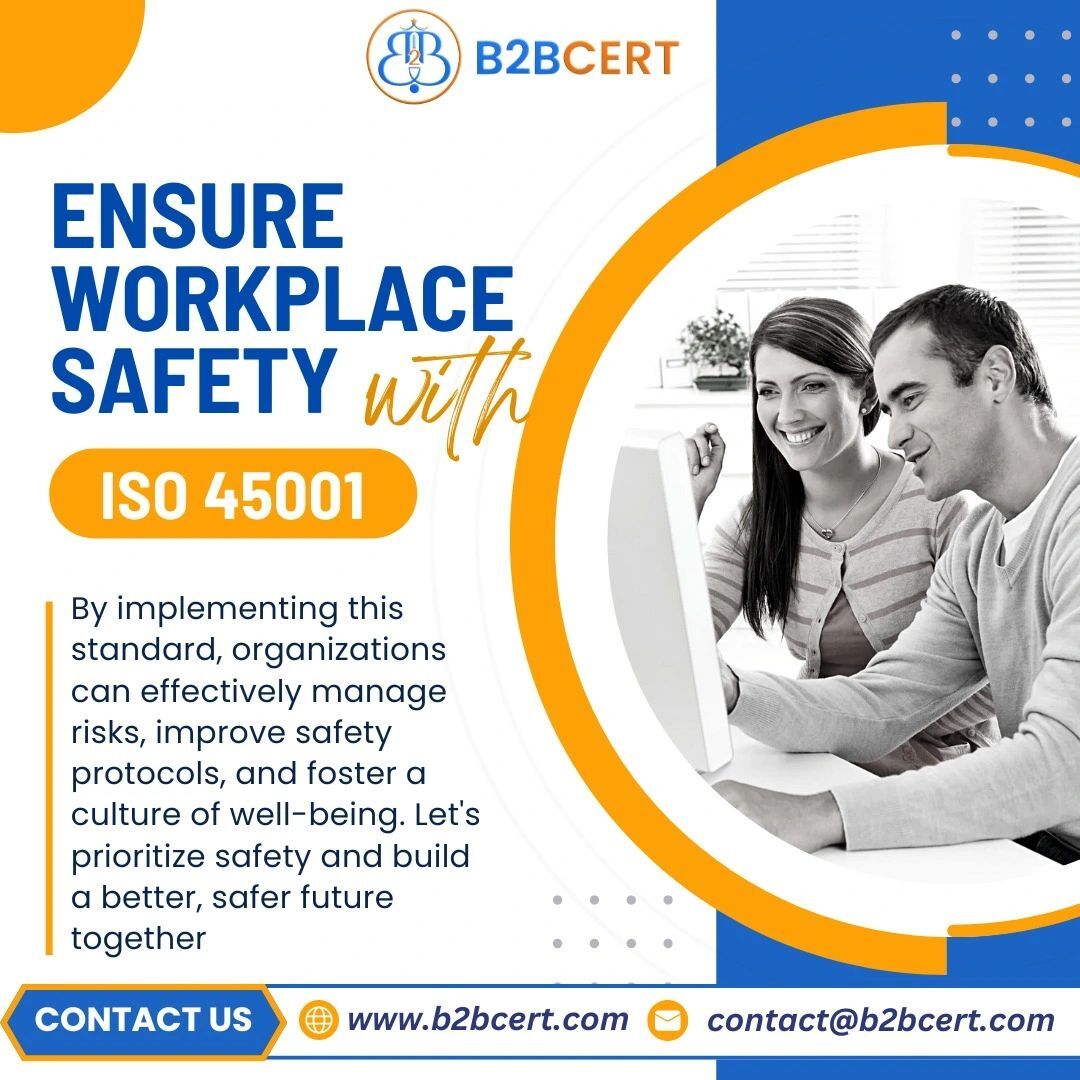Workplace safety and health management are crucial for businesses across all industries. ISO 45001 is an internationally recognized standard for occupational health and safety (OH&S) management systems, designed to help organizations minimize risks, enhance employee well-being, and ensure compliance with legal requirements.Achieving ISO 45001 Certification in Singapore demonstrates a company’s commitment to workplace safety and continuous improvement. This article provides an in-depth guide on ISO 45001 certification in Singapore, its benefits, and the steps required for implementation.
What is ISO 45001?
ISO 45001 is a globally recognized standard developed by the International Organization for Standardization (ISO) to provide a framework for managing occupational health and safety risks. It replaces the previous OHSAS 18001 standard and follows a high-level structure similar to other ISO management system standards like ISO 9001 (Quality Management) and ISO 14001 (Environmental Management). The goal of ISO 45001 is to prevent work-related injuries and illnesses while promoting a safe and healthy work environment.
Importance of ISO 45001 Certification in Singapore
Singapore has strict workplace safety regulations under the Workplace Safety and Health Act (WSHA), enforced by the Ministry of Manpower (MOM). Companies operating in high-risk industries, such as construction, manufacturing, and logistics, must prioritize safety compliance. ISO 45001 certification helps businesses:
- Enhance Workplace Safety – Reducing risks associated with workplace hazards and ensuring a safer environment for employees.
- Ensure Legal Compliance – Meeting national and international occupational health and safety requirements.
- Improve Business Reputation – Demonstrating a commitment to employee welfare and corporate responsibility.
- Increase Productivity – A safer work environment reduces absenteeism and downtime caused by workplace incidents.
- Gain a Competitive Advantage – Many clients and partners prefer working with ISO-certified companies for assurance of compliance and quality.
Steps to Obtain ISO 45001 Certification in Singapore
Achieving ISO 45001 Services in Singapore involves several stages, including planning, implementation, and assessment. Below is a step-by-step guide:
1. Understanding ISO 45001 Requirements
Companies must familiarize themselves with the ISO 45001 standard and its key elements, including:
- Leadership and worker participation
- Hazard identification and risk assessment
- Legal and regulatory compliance
- Incident investigation and reporting
- Emergency preparedness and response
- Continual improvement processes
2. Conducting a Gap Analysis
A gap analysis helps organizations assess their current OH&S management system and identify areas that require improvement to meet ISO 45001 standards.
3. Developing an OH&S Management System
Organizations should develop policies, procedures, and safety protocols to align with ISO 45001 requirements. This includes:
- Establishing safety objectives
- Implementing risk control measures
- Employee training and awareness programs
- Monitoring and performance evaluation systems
4. Employee Training and Awareness
Engaging employees in workplace safety is crucial for successful implementation. Organizations should conduct training programs to ensure all staff members understand their roles in maintaining a safe work environment.
5. Internal Audit and Management Review
Before applying for certification, companies must conduct an ISO 45001 Audit in Singapore to identify non-conformities and areas for improvement. A management review meeting should be held to evaluate the effectiveness of the OH&S management system.
6. Selecting a Certification Body
Organizations must choose an accredited certification body in Singapore to conduct the external audit. Common certification bodies include:
- TÜV SÜD
- SGS Singapore
- Bureau Veritas
- Lloyd’s Register
7. External Audit and Certification
The certification body conducts an external audit in two stages:
- Stage 1 Audit: Reviewing documentation and readiness for certification.
- Stage 2 Audit: Assessing the implementation of the OH&S management system and its compliance with ISO 45001.
If the organization meets all requirements, the certification body will issue an ISO 45001 certificate, which is valid for three years with periodic surveillance audits.
Cost of ISO 45001 Certification in Singapore
The cost of ISO 45001 certification depends on factors such as company size, industry risk level, and the chosen certification body. The approximate cost includes:
- Training and Consultancy: SGD 3,000 – SGD 10,000
- Internal Audit Costs: SGD 2,000 – SGD 5,000
- Certification Audit Fees: SGD 5,000 – SGD 15,000
Maintaining ISO 45001 Certification
To maintain certification, companies must:
- Conduct regular internal audits and management reviews.
- Continuously monitor and improve OH&S practices.
- Undergo annual surveillance audits by the certification body.
- Ensure compliance with legal and regulatory updates.
Conclusion
ISO 45001 Consultants in Singapore is a strategic investment for businesses in Singapore that prioritize workplace safety and employee well-being. It not only ensures compliance with local and international safety standards but also improves operational efficiency and enhances corporate reputation. By following the right steps and working with a reputable certification body, organizations can successfully achieve and maintain ISO 45001 certifica









